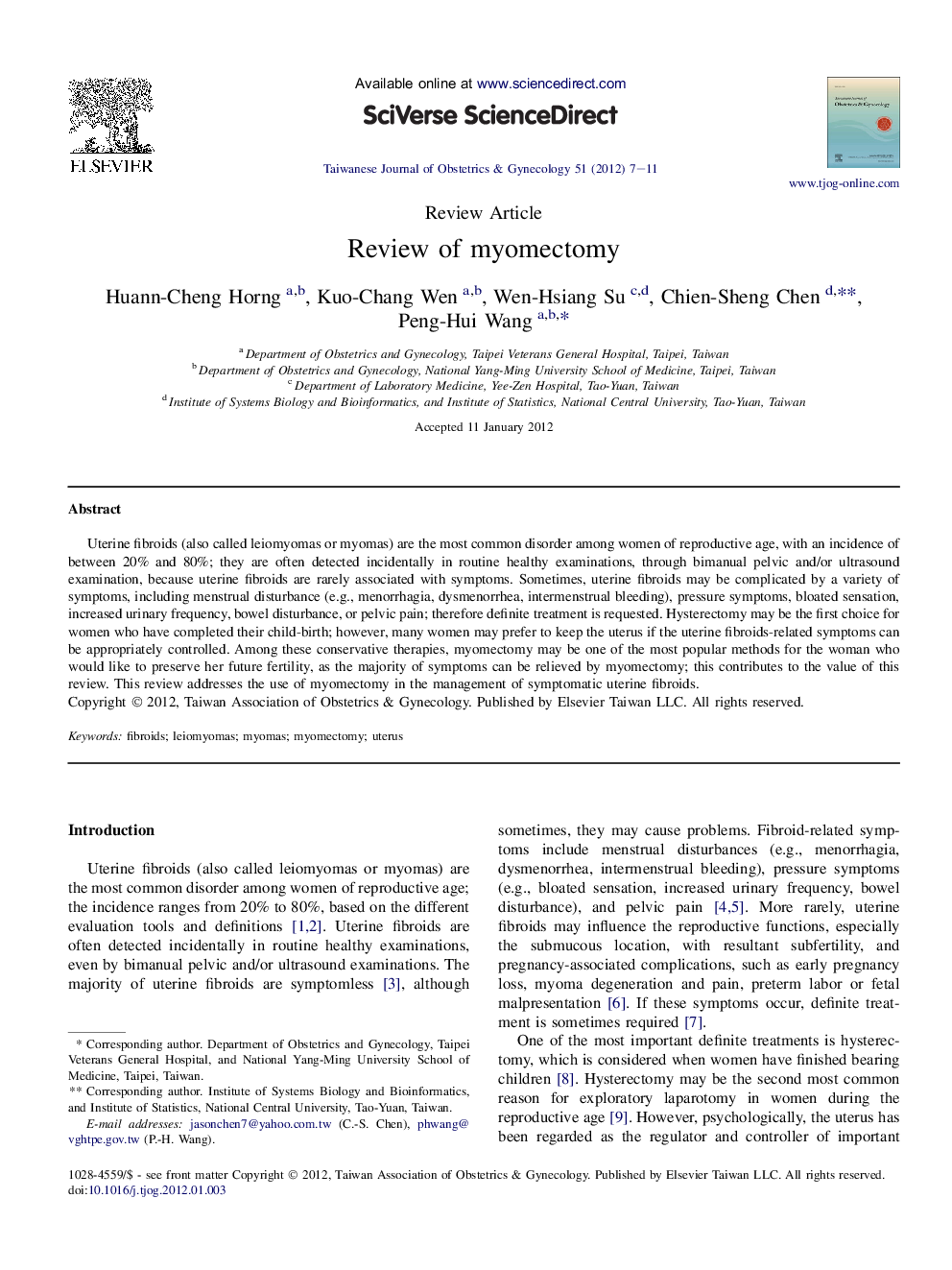| Article ID | Journal | Published Year | Pages | File Type |
|---|---|---|---|---|
| 3975312 | Taiwanese Journal of Obstetrics and Gynecology | 2012 | 5 Pages |
Uterine fibroids (also called leiomyomas or myomas) are the most common disorder among women of reproductive age, with an incidence of between 20% and 80%; they are often detected incidentally in routine healthy examinations, through bimanual pelvic and/or ultrasound examination, because uterine fibroids are rarely associated with symptoms. Sometimes, uterine fibroids may be complicated by a variety of symptoms, including menstrual disturbance (e.g., menorrhagia, dysmenorrhea, intermenstrual bleeding), pressure symptoms, bloated sensation, increased urinary frequency, bowel disturbance, or pelvic pain; therefore definite treatment is requested. Hysterectomy may be the first choice for women who have completed their child-birth; however, many women may prefer to keep the uterus if the uterine fibroids-related symptoms can be appropriately controlled. Among these conservative therapies, myomectomy may be one of the most popular methods for the woman who would like to preserve her future fertility, as the majority of symptoms can be relieved by myomectomy; this contributes to the value of this review. This review addresses the use of myomectomy in the management of symptomatic uterine fibroids.
